Charmed, I’m Sure: West Hartford’s West Hill Drive Historic District

Audio By Carbonatix
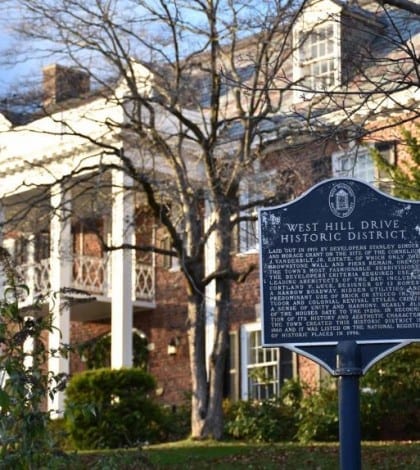
West Hill Drive is one of three designated Historic Districts in West Hartford. Photo credit: Deb Cohen
Deb Cohen of ‘The Front Door Project’ takes a tour of West Hartford’s West Hill Drive Historic District.
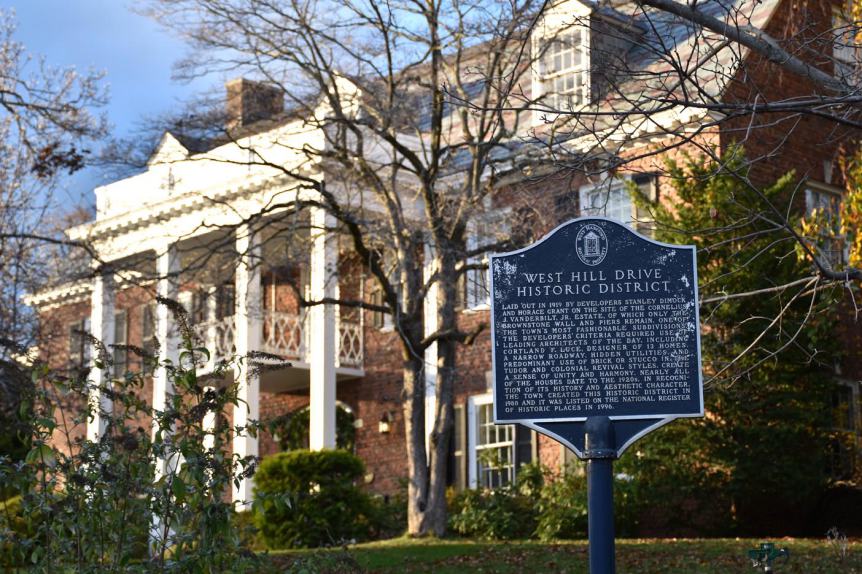
West Hill Drive is one of three designated Historic Districts in West Hartford. Photo credit: Deb Cohen
By Deb Cohen
Having lived in West Hartford for over 20 years now and due to my more recent pastime of photographing homes, I have become familiar with many sections of town. One of my favorite spots is a little jewel of a neighborhood called the West Hill Drive Historic District.
I’ll never forget the first time I discovered what was behind the stone wall on Farmington Avenue that separates West Hill from the busy street. I had passed it countless times and finally noticed an opening in the wall that appeared to be a driveway. I assumed it led to a big estate and was most likely private.
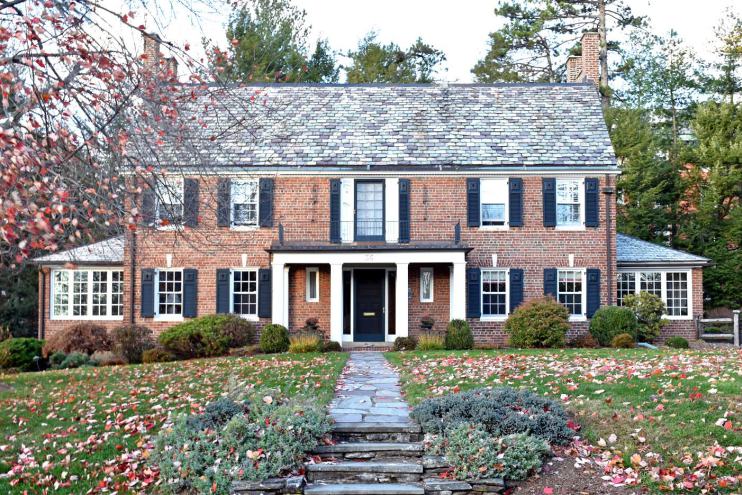
The slate roof and brickwork are the most striking details of this home. Photo credit: Deb Cohen
Upon further inspection (meaning me stopping and actually peeking into the opening) I realized there was an entire neighborhood hiding behind the wall. Even though I was still concerned it might be private, I took my chances and drove in.
I did a slow loop around West Hill Drive, soaking in the details of the neighborhood. I was instantly enchanted by the grouping of homes, similar to each other in many ways but also distinctively unique. It wasn’t until many years later that I learned that the entire neighborhood was a historic district.

An interesting Tudor home with a stucco exterior, brick details, and a slate roof. Photo credit: Deb Cohen
The homes of West Hill Drive are on the National Register of Historic Places as well as the Connecticut State Register of Historic Places. Importantly, they are also one of three designated Local Historic Districts within West Hartford.
Being part of a Local Historic District means that the West Hartford Historic District Commission is responsible for working with residents of the district to ensure that the historic architectural integrity of the homes is maintained over time.

The windows in this home are such a distinctive feature due to their size. So much sparkle! Photo credit: Deb Cohen
Residents are aware when they buy a home on West Hill Drive that the exterior of their property is governed by the Historic District Commission. Exterior changes require a Certificate of Appropriateness from the Commission which meets monthly to review requests and handle other business.
Examples of changes requiring a Certificate of Appropriateness would be roofing, windows and trim work. Paint color is not governed by the Commission, nor are the interiors of the homes. The goal is to keep the homes looking as they were when originally built, requiring the use of like materials when maintaining the home whenever feasible.
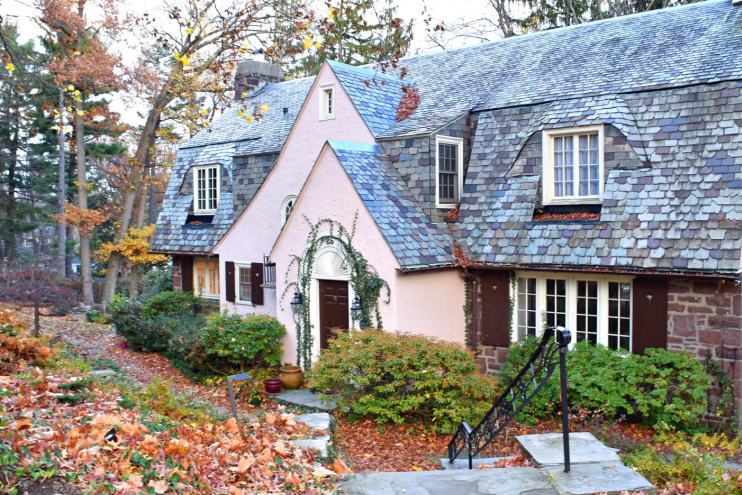
My favorite homoe in West Hill, and perhaps in all of West Hartford. Such storybook charm! Photo credit: Deb Cohen
Although some may consider the restrictions on exterior changes to be a drawback to home ownership, those that choose to live in a historic district don’t see it that way. They appreciate the history of the home and the value of maintaining the neighborhood over time.
On the plus side, having homes listed on the National Register of Historic Places is a sure way to increase property values over time. Studies have repeatedly shown that homes with a designation are worth more than similar local homes without a designation. Homeowners have access to historic tax credits for home repairs, a benefit that isn’t widely known.
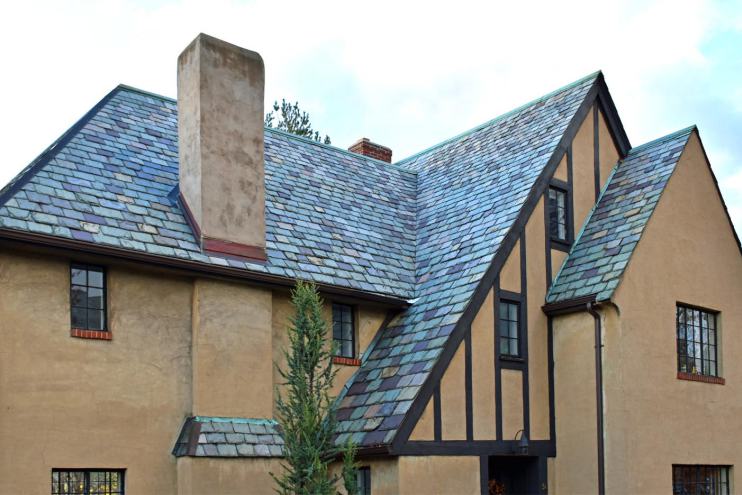
This Tudor has such an interesting roofline, and again the stunning slate roof. Photo credit: Deb Cohen
So how did the West Hill neighborhood become a historic district? The plot of land where the homes are located, which is about 11 acres, was originally owned by Cornelius Vanderbilt, otherwise known as the Commodore. I was surprised and excited to learn the Vanderbilts had a connection to West Hartford.
The Commodore purchased the land for his son, Cornelius J. Vanderbilt (confusing!) in 1857 with the thought that he would build his home there. Cornelius J. Vanderbilt suffered from severe epilepsy and seemed to be a troubled soul.
After a time which included the Commodore selling the land and Cornelius J. repurchasing it, Cornelius J. finally hired an architect to design the Vanderbilt Mansion which was completed around 1882. However, he never lived in it. Cornelius J. Vanderbilt committed suicide via gunshot in New York that same year.
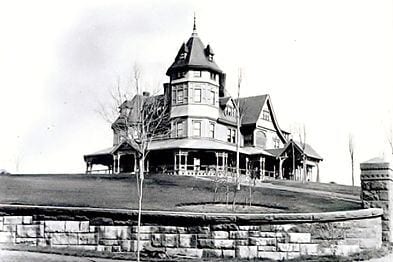
The Vanderbilt Mansion. The stone wall bordering the estate still stands as part of the West Hill Drive Historic District today. Courtesy photo
The house stood vacant until 1888 when it was purchased by Ira Dimock who was a silk manufacturer. He and his family lived in the mansion until his wife passed away in 1917. Their son Stanley demolished the mansion in 1918 to make way for real estate development in 1919.
Stanley and his partner Horace Grant created restrictions around the development which included that each home must have a 15 foot setback, that the seller had to agree to the architect to be used and that the brownstone wall that originally surrounded the Vanderbilt Mansion be retained.
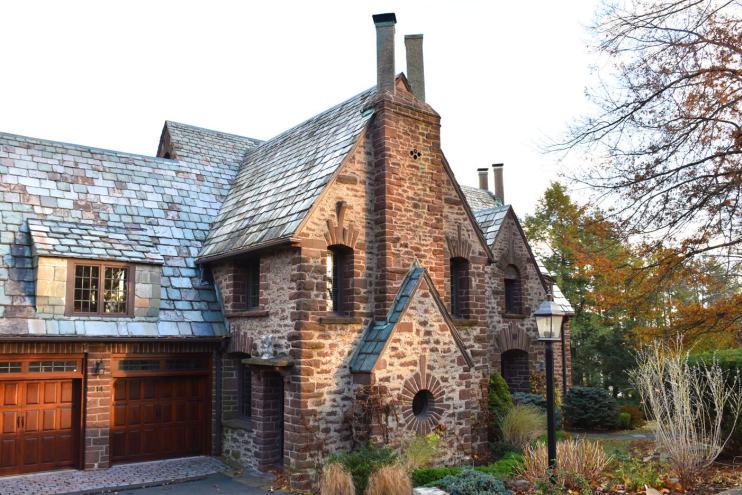
There is a face in this home’s facade. Once you see it, you can’t unsee it! Photo credit: Deb Cohen
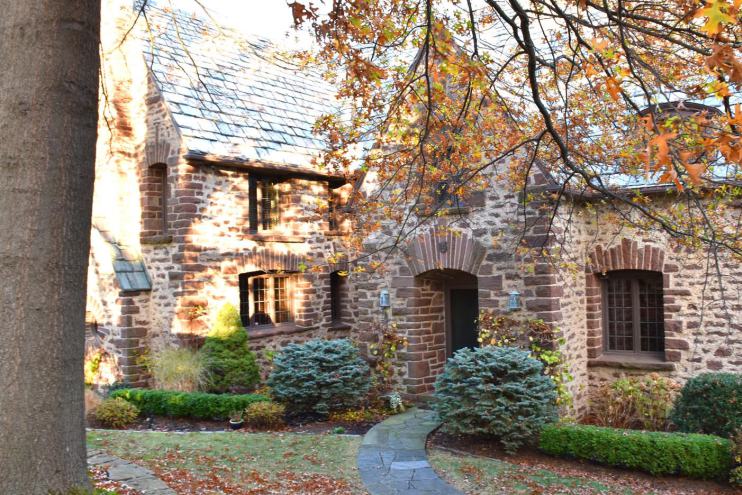
Another view of the same home. The stonework is stunning. Photo credit: Deb Cohen
The intent was to create a prestigious neighborhood with architect-designed homes that had a cohesive look and feel. The majority of homes are Tudor or Colonial Revival, are on similar size lots, are of a similar size and scale and have slate roofs which is a feature you notice immediately upon entering the district.
However, each architect added wonderful design details to each such that no two look alike. Whether it be patterned brick, stonework or stucco walls, unusual roof lines, various sizes and shapes of windows, different chimney styles or any number of other details, each home is distinctive and special.
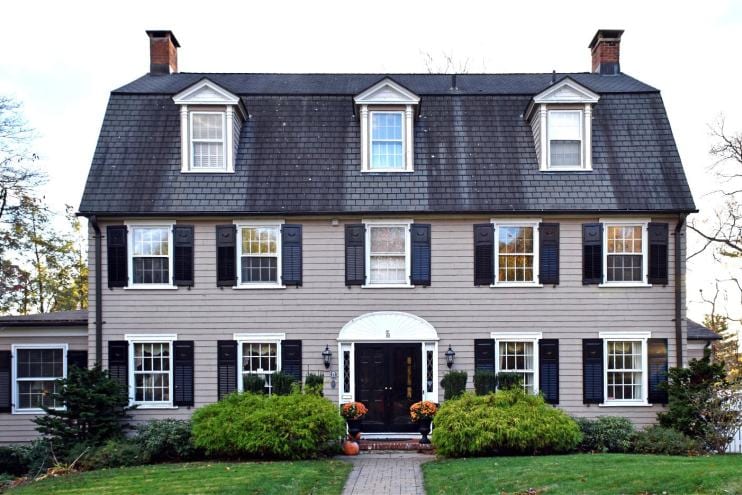
One of only a handful of homes in the Historic District without a slate roof, but beautiful nonetheless. Photo credit: Deb Cohen
The lots in the neighborhood were quickly snapped up by prominent local businessmen and their families. The founder of the Wiremold Company, a principal in the Silex company and Horace Grant, the president of the Allen Manufacturing Company (maker of the Allen wrench!) are just a few of the neighborhoods notable residents.
The homes were designed by a number of architects, all the most successful architects at the time in the Hartford area. A few architects designed two to three of the homes each, but ensured that each home could stand on its own in terms of its architectural features.
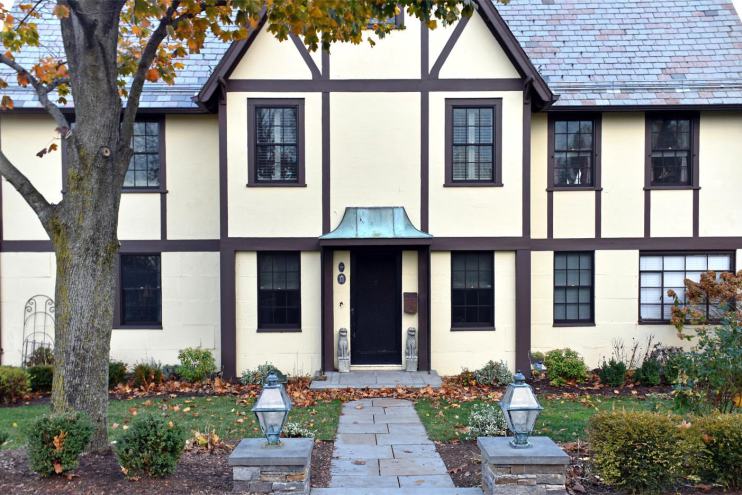
I see another face! The copper details of this home stand out against the stucco finish. Photo credit: Deb Cohen
Although it’s a shame that the Vanderbilt Mansion was demolished, the resulting development of the property has left the town of West Hartford with a special neighborhood deserving of the National Register designation that will continue to stand the test of time.
It’s an early example of a planned real estate development that used design restrictions to maintain a high level of integrity and quality, so different from the cookie-cutter developments of today. If you ever find yourself on Farmington Avenue in West Hartford, take a peek behind the brownstone wall to see the treasure that lies there.
Thank you to the CT Trust and Living Places, both of which provided me with much of the information provided.
Enjoy this post? Then you might enjoy Broadway in Saratoga Springs or Date in Hartford’s West End.
Deb Cohen of West Hartford started The Front Door Project in the summer of 2014 as a way to motivate herself to get outside, exercise and pay more attention to her surroundings. She began photographing homes with a primary focus on the front door, which is a welcoming focal point. Social media provided the means to share the photographs and a ready audience to follow along, and her new-found interest soon led to exploring other local area towns in my free time. The “project” has led to deeper interests in architecture, local history and historic preservation and came at a time in Deb’s life when she needed some inspiration. Please join Deb as she continues to share her everyday travels and explorations of other towns and places! You can find her other posts at www.thefrontdoorproject.com.
Like what you see here? Click here to subscribe to We-Ha’s newsletter so you’ll always be in the know about what’s happening in West Hartford!



